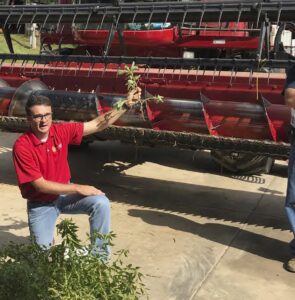Madison, Wisconsin, USA
October 13, 2020

Crop harvest is here and that means it’s time to be thinking about weed seedbank management. Over the last few weeks we have observed fields throughout Wisconsin with a fair amount of weed escapes. Our UW Madison Division of Extension Weed Science Group offers the following information for consideration.
Weed seed in harvested crops can negatively impact a farm’s potential profits. Sometimes the impact can be immediate like crop yield reduction, the rejection of a grain load due to export market regulations; and at other times, it can set the stage for future problems like herbicide resistance and increased control costs.
Although weed seed can spread in ways that can’t be controlled (animals, wind), there are management strategies that can prevent seeds from further spreading farm to farm (cleaning equipment, hand weeding before harvest, reducing erosion).
The timing of weed seed control is also important; weed seed management at crop harvest is critical because at harvest, weeds that have survived other control attempts during the growing season and produced viable seed (also called weed escapes) can be spread from farm to farm if equipment is not properly and thoroughly cleaned. Many species have the potential to be troublesome but waterhemp has proven to be exceptionally challenging in recent years.
The most troublesome weeds in Wisconsin, waterhemp and giant ragweed, will retain their seeds well into October in the Upper Midwest. If you have weeds that have set seed in your field, now is the time to get out there, remove and burn them before combines start rolling. Check the “UW-NPM Weed Seed Manag